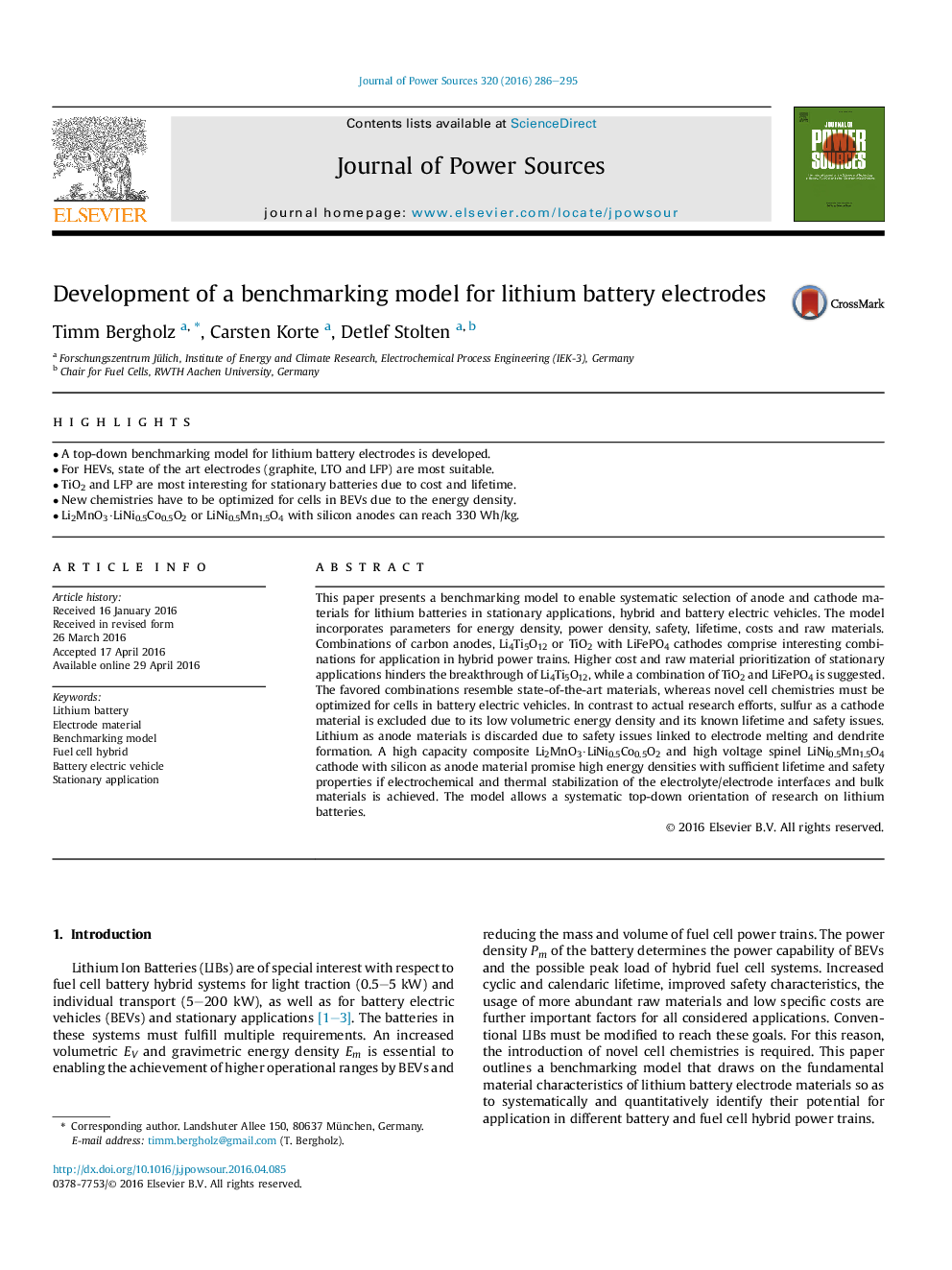| کد مقاله | کد نشریه | سال انتشار | مقاله انگلیسی | نسخه تمام متن |
|---|---|---|---|---|
| 1286039 | 1497912 | 2016 | 10 صفحه PDF | دانلود رایگان |
• A top-down benchmarking model for lithium battery electrodes is developed.
• For HEVs, state of the art electrodes (graphite, LTO and LFP) are most suitable.
• TiO2 and LFP are most interesting for stationary batteries due to cost and lifetime.
• New chemistries have to be optimized for cells in BEVs due to the energy density.
• Li2MnO3·LiNi0.5Co0.5O2 or LiNi0.5Mn1.5O4 with silicon anodes can reach 330 Wh/kg.
This paper presents a benchmarking model to enable systematic selection of anode and cathode materials for lithium batteries in stationary applications, hybrid and battery electric vehicles. The model incorporates parameters for energy density, power density, safety, lifetime, costs and raw materials. Combinations of carbon anodes, Li4Ti5O12 or TiO2 with LiFePO4 cathodes comprise interesting combinations for application in hybrid power trains. Higher cost and raw material prioritization of stationary applications hinders the breakthrough of Li4Ti5O12, while a combination of TiO2 and LiFePO4 is suggested. The favored combinations resemble state-of-the-art materials, whereas novel cell chemistries must be optimized for cells in battery electric vehicles. In contrast to actual research efforts, sulfur as a cathode material is excluded due to its low volumetric energy density and its known lifetime and safety issues. Lithium as anode materials is discarded due to safety issues linked to electrode melting and dendrite formation. A high capacity composite Li2MnO3·LiNi0.5Co0.5O2 and high voltage spinel LiNi0.5Mn1.5O4 cathode with silicon as anode material promise high energy densities with sufficient lifetime and safety properties if electrochemical and thermal stabilization of the electrolyte/electrode interfaces and bulk materials is achieved. The model allows a systematic top-down orientation of research on lithium batteries.
Journal: Journal of Power Sources - Volume 320, 15 July 2016, Pages 286–295
